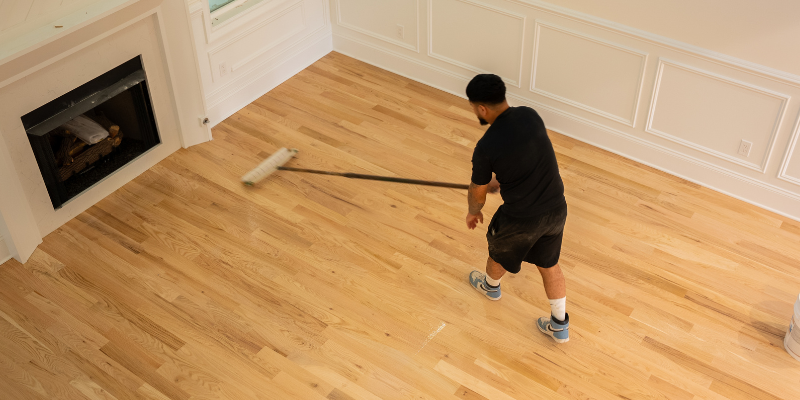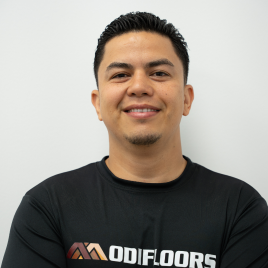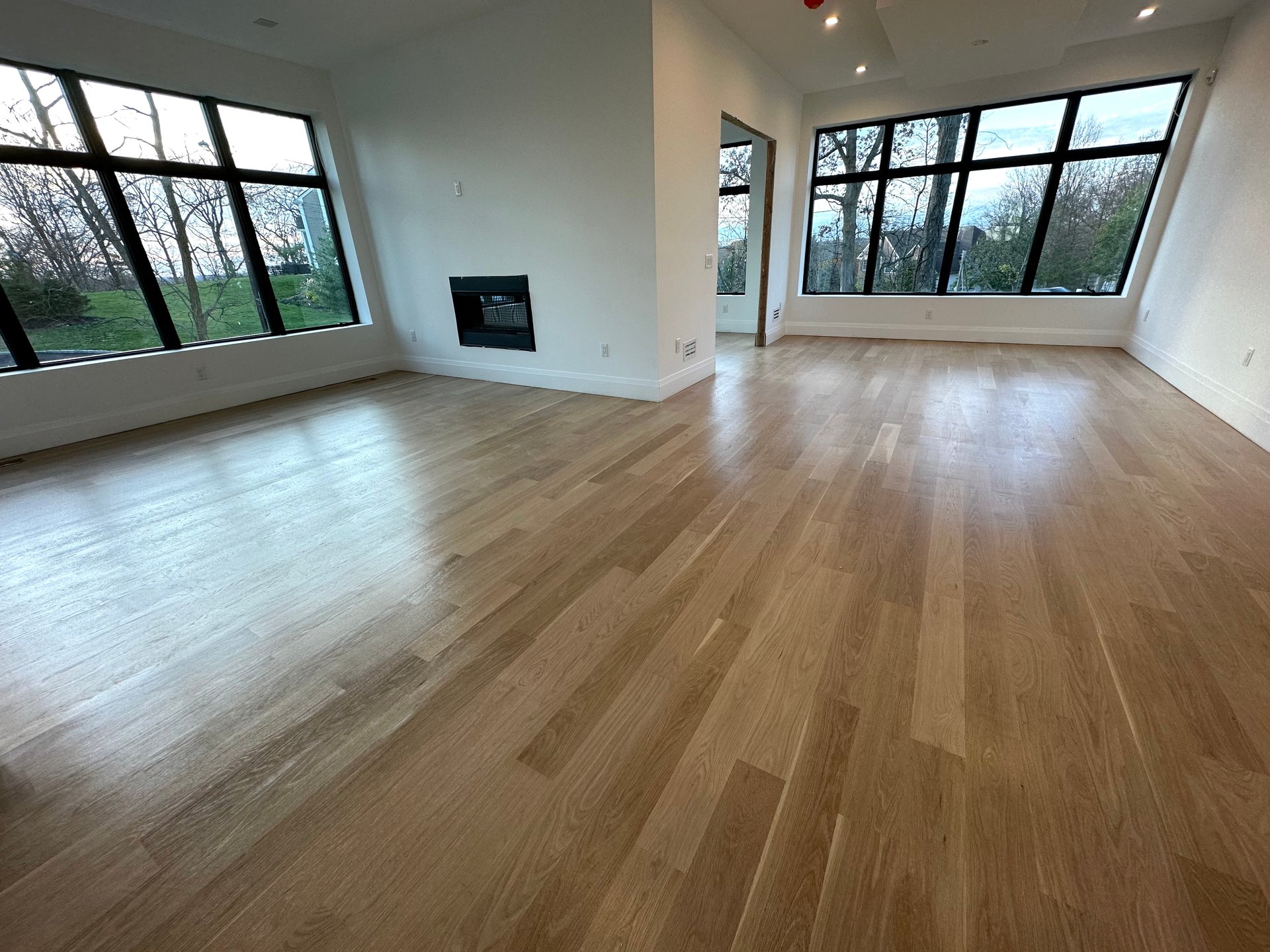No items found.

Why Opt for Professional Hardwood FloorRefinishing Instead of DIY?
Professional hardwood floorrefinishing breathes new life into tired wood surfaces through expert sanding, meticulous repairs, and the application of long-lasting finishes. Choosing professional refinishing over DIY offers distinct advantages: you’ll enjoy results that last longer, experience fewer mishaps, and benefit from improved indoor air quality thanks to advanced dust containment and low VOC products. Homeowners often misjudge the time, equipment, and skill required for a flawless finish. This guide illuminates the risks of DIY, the advantages professionals provide, cost comparisons, and the professional refinishing process. Tailored for homeowners in New Jersey and New York, this article includes practical comparisons, EAV tables, and checklists to help you decide whether to request a free estimate or tackle the project yourself. By the end, you’ll understand why professional service is the wiser choice for achieving beautiful, enduring floors.
What Are the Hidden Risks of DIY Hardwood Floor Refinishing?
While DIY hardwood floor refinishing may seem budget-friendly, it conceals risks leading to irreversible damage, wasted funds, and health hazards. Issues like uneven sanding, improper stain absorption, and insufficient dust containment compromise appearance and structural integrity, often necessitating professional repairs and erasing initial savings. Understanding these risks helps homeowners weigh immediate cost benefits against long-term liabilities. The following sections highlight common DIY mistakes and their impact on time, cost, and quality.
What Common Mistakes Do DIYers Make When Refinishing Hardwood Floors?
Many DIY enthusiasts underestimate consistent sanding, resulting in visible gouges, uneven surfaces, and over-sanding at edges. Poor equipment and techniques lead to swirl marks or low spots, challenging to fix without professional tools. Incorrect stain mixing or application can result in blotchy colors, while inadequate drying time causes finish failures like peeling and clouding. These errors often necessitate additional sanding and refinishing, increasing both time and costs, and can even damage the original wood.
How Does DIY Refinishing Impact Time, Cost, and Quality?
DIY refinishing frequently extends project timelines as homeowners juggle responsibilities, leading to interruptions and improper curing. Initial labor savings are often offset by rental fees, replacement supplies, and opportunity cost. Professionals provide a consistent, durable finish minimizing early rework, while DIY results often require repairs within years. Investing in professional craftsmanship ultimately lowers total life cycle costs and preserves resale value, as numerically compared in the next section.
What Advantages Does Professional Hardwood FloorRefinishing Offer?
Professional hardwood floorrefinishing offers exceptional durability, consistent aesthetics, and enhanced indoor air quality through specialized techniques, equipment, and materials. Industrial-grade sanding and expert finish application extend floor lifespan and maintain property value. Professionals also manage dust and VOC exposure, reducing clean-up and health risks. Key advantages include:
- Long lasting finish: Industrial grade sanding and finish application enhance durability and lessen the need for early rework.
- Cleaner job site: Dust control systems significantly reduce airborne particulates and streamline clean up.
- Health conscious materials: Low VOC finishes minimize impacts on indoor air quality and facilitate safer reoccupancy.
- Design guidance and consistency: Professionals offer color selection and sheen recommendations for enduring aesthetic appeal.
- Warranty and accountability: Guaranteed workmanship safeguards homeowners against premature failures.
These advantages translate into measurable outcomes, such as fewer return visits and improved long-term appearance. Professional features like industrial equipment, dustless sanding, and low VOC finishes deliver significant value, summarized in the EAV table below.
| Feature | Attribute | Practical Value |
|---|---|---|
| Dustless Sanding Service | Health Impact: reduced airborne particulates | Easier clean up and safer air during work and reoccupancy |
| Low VOC Finish Application | Cleanliness: minimal off gassing | Faster reoccupancy and lower indoor VOC levels |
| Industrial Grade Equipment | Durability: consistent sanding profile | Longer finish lifespan with fewer repairs |
This EAV table illustrates how targeted professional services translate into tangible benefits for homeowners. The next section will break down how expert craftsmanship enhances the quality and durability of finished floors.
How Does Expert Craftsmanship Improve Hardwood Floor Quality and Durability?
Expert craftsmanship emphasizes precise sanding, careful repair, and controlled finish application for even wear and consistent color. Professionals are versed in grain orientation, transition zones, and edge blending, preventing visual defects. The professional approach uses progressive grit sanding and quality finish coats under controlled conditions to maximize abrasion resistance and clarity, extending the floor's functional life and maintaining its appearance.
Why Is Dustless Sanding and Low VOC Finishing Important for Your Home?
Dustless sanding and low VOC finishing are essential, minimizing airborne particles and chemical emissions that affect indoor air quality. Dustless systems contain fine particulates, preventing widespread dust accumulation, while low VOC products reduce odors and health risks. These methods shorten safe reoccupancy timelines and protect sensitive individuals, ensuring a cleaner process and healthier environment.
How Does the Cost of Professional Refinishing Compare to DIY Methods?
Comparing professional hardwood floorrefinishing to DIY requires evaluating immediate expenses against long-term value, considering material, equipment, labor, rework likelihood, and warranty. Professionals charge for expertise, project management, and premium materials, mitigating hidden costs like repeat sanding and finish failures. While DIY may lower initial expenses, it significantly increases the likelihood of higher costs over several years through repairs, loss of resale value, or replacement. The following sections unpack cost drivers and present an EAV comparison table.
| Approach | Cost Attribute | Outcome/Value |
|---|---|---|
| DIY | Initial Cost: material rentals and stains | Lower upfront spend; higher risk of rework |
| Professional | Time: project managed scheduling | Faster completion and predictable timeline |
| DIY | Risk: potential floor damage | Increased long term repair costs |
| Professional | Warranty: workmanship guarantees | Lower life cycle cost and better resale value |
This table clarifies that professional services trade a higher initial investment for reduced long term risk and improved life cycle economics. The next section will outline the primary cost drivers of professional refinishing to help homeowners anticipate quotes.
What Factors Influence the Cost of Professional Hardwood FloorRefinishing?
Several factors determine professional refinishing costs: square footage, necessary repairs, wood species, finish type, and access/logistics. Higher traffic or damaged floors require more repair time and materials, increasing price. Premium finish systems or commercial-grade coatings raise material costs but extend longevity. Regional variables like seasonality and climate also influence scheduling and drying times, affecting total project duration.
How Can Professional Refinishing Save You Money Long Term?
Professional refinishing lowers lifetime costs by providing a more durable finish, reducing repair frequency and early replacement needs. Extended finish lifespan through professional techniques and materials decreases annualized maintenance costs and preserves resale value. Warranty coverage and guaranteed workmanship mitigate unexpected expenses, offering predictable maintenance intervals instead of repeat DIY fixes.
What Is the Professional Hardwood FloorRefinishing Process From Start to Finish?
Professional refinishing adheres to a clear, sequential process: assessment, repairs, sanding, staining (if desired), finish application, curing, and final inspection. Each phase employs standards to minimize risks, from accurate assessments and dust control to staged finish coats. Professionals schedule work to accommodate drying and curing times, coordinate repairs, and conduct final quality checks. The typical workflow includes:
- Initial assessment: Inspect flooring species, damage level, and subfloor conditions.
- Repairs and prep: Replace or repair boards, countersink nails, and clean surfaces.
- Sanding: Utilize progressive grits and dust containment systems for an even profile.
- Staining (optional): Apply color evenly and allow proper drying between coats.
- Finishing: Apply multiple finish coats with correct cure times for maximum durability.
- Final inspection and hand off: Ensure uniform finish, address punch list items, and provide maintenance advice.
These steps create predictable outcomes and minimize common DIY pitfalls by standardizing technique and process control. The EAV table below outlines time expectations, professional standards, and DIY pitfalls for each major step.
| Phase | Typical Duration | Professional Standard |
|---|---|---|
| Assessment | 1 to 2 hours | Comprehensive scope and repair plan |
| Sanding & Prep | 1 to 3 days | Dustless sanding and progressive grits |
| Staining & Finishing | 2 to 5 days | Multiple finish coats with proper cure |
This table illustrates how professionals allocate time to ensure both quality and efficiency. The next section will explain how a professional provider executes these steps in practice with operational quality controls.
How Does ModiFloors Ensure Efficient and High Quality Project Completion?
ModiFloors employs proven operational practices—dust-controlled sanding, scheduled project management, and final inspections—to deliver efficient, high-quality refinishing in New Jersey and New York. Their dust extraction equipment minimizes airborne particulates, industrial sanders create consistent profiles, and project scheduling reduces downtime. ModiFloors prioritizes premium low VOC finishes and clear communication for predictable timelines and durable outcomes.
What Design Guidance and Customization Options Are Available?
Professional teams advise on stain colors, sheen levels, plank sizing, and texturing options to align with local architecture, lifestyle, and regional climate. Designers often recommend matte or low sheen finishes for modern aesthetics and wide plank trends in New Jersey or New York. Professionals showcase sample boards and mock-ups, allowing homeowners to visualize results and select finishes that balance durability with appearance.
Why Should New Jersey and New York Homeowners Hire ModiFloors for Refinishing?
ModiFloors serves homeowners and businesses in New Jersey and New York with hardwood services blending master craftsmanship, dust-controlled sanding, premium low VOC finishes, and guaranteed workmanship. These features are tailored to regional needs and modern indoor air quality standards. ModiFloors offers personalized design guidance, efficient project completion, and leverages local knowledge for optimal finish selection and scheduling around climate nuances. With a strong reputation, reflected by a 4.8-star rating from over 217 reviews, ModiFloors provides a comprehensive solution emphasizing quality, cleanliness, and communication. Homeowners can request a free estimate to assess scope, cost, and timeline.
How Does ModiFloors’ Local Knowledge Benefit Homeowners and Businesses?
Regional expertise enables ModiFloors to recommend suitable finishes and project timing that account for New Jersey and New York humidity variations and housing construction practices. This local knowledge ensures finish cure times and humidity-controlled scheduling minimize defects and moisture issues. Familiarity with logistics shortens lead times and enhances on-site coordination, reducing disruption for occupants and businesses.
What Do Customers Say About ModiFloors’ Hardwood Refinishing Services?
Market feedback indicates high satisfaction, with a notable 4.8-star rating from over 217 reviews, reflecting consistent client appreciation for workmanship and service. Prospective clients are encouraged to explore project case studies and customer feedback to confirm fit and expectations for similar properties.
What Are the Environmental and Health Benefits of Professional Hardwood FloorRefinishing?
Professional refinishing enhances environmental outcomes and indoor health by utilizing low VOC finishes and dust containment systems. These minimize airborne particulates and chemical emissions, reducing off-gassing and occupant exposure, and facilitating safer reoccupancy. Extending the life of existing hardwood also supports sustainability by delaying replacement and reducing material waste. The following sections detail how low VOC finishes and dustless sanding provide measurable health and environmental benefits.
How Do Low VOC Finishes Improve Indoor Air Quality and Sustainability?
Low VOC finishes emit fewer volatile organic compounds during application and curing, reducing indoor air pollution, odors, and sensitivity reactions. From a sustainability standpoint, premium low VOC systems often match the durability of traditional finishes, extending floor life and reducing refinishing frequency. Industry trends favor low VOC formulations for health and regulatory considerations, with professional application ensuring adherence to cure times for safer reoccupancy.
Why Is Dustless Sanding a Cleaner and Safer Refinishing Method?
Dustless sanding captures most particulates at the source via connected vacuum systems, minimizing contamination of household surfaces and HVAC. This containment reduces respiratory irritation risks and shortens post-job clean-up, crucial in homes with children, elderly, or allergy sufferers. Dustless systems also enhance finish adhesion by limiting fine dust that interferes with coating bonding, resulting in superior long-term finish performance.
- Cleaner Air: Reduced particulates mean fewer allergens and dust deposits throughout the home.
- Faster Clean up: Contained sanding significantly cuts down post job clean up time.
- Better Finish Adhesion: Less airborne dust enhances coating performance and longevity.






